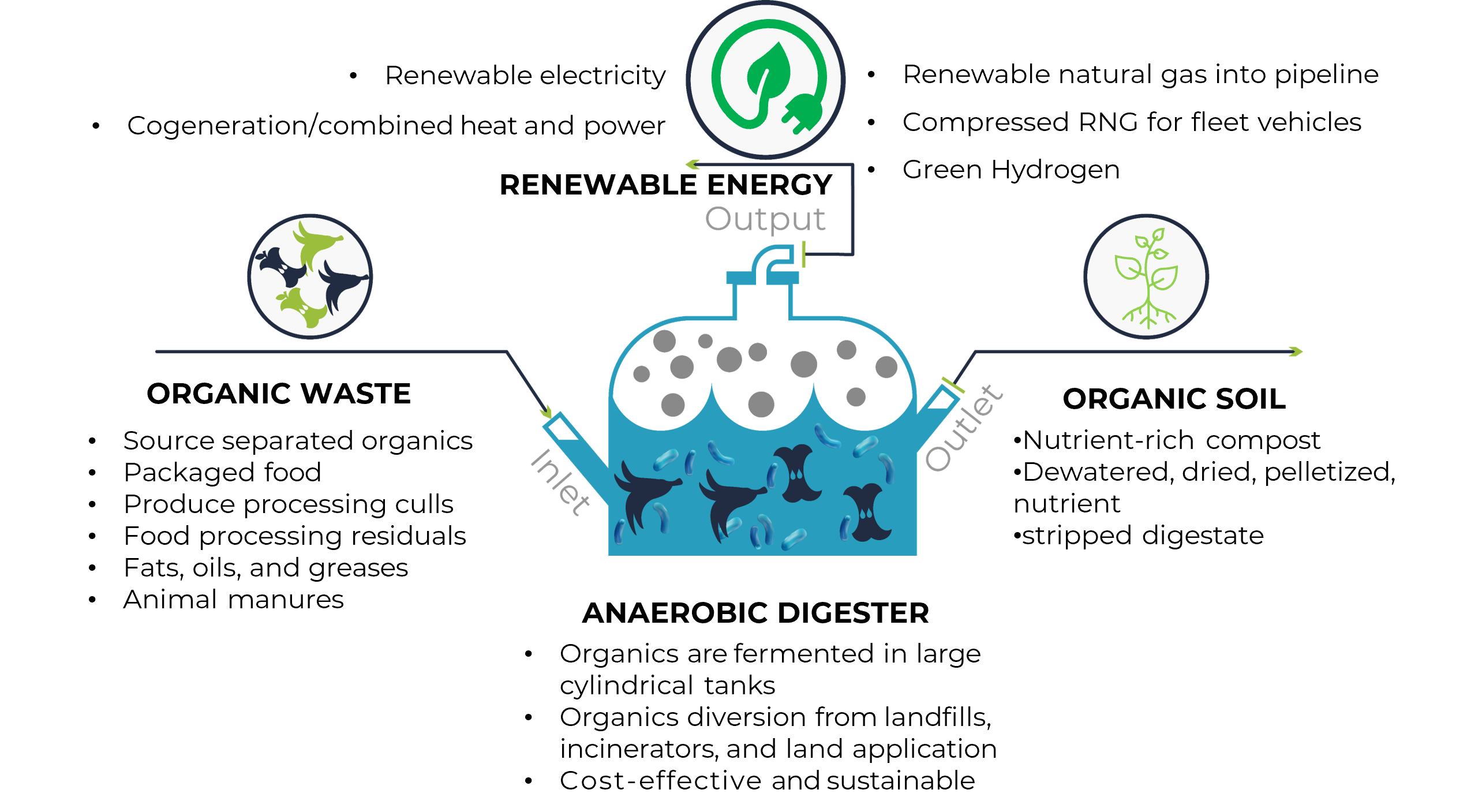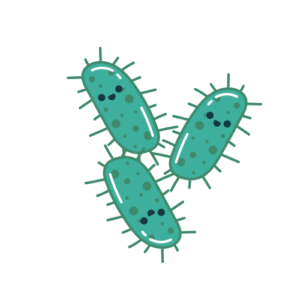Anaerobic Digestion
What is Anaerobic digestion?
(“AD”) is a well proven process where organic materials are broken down naturally by microorganisms in the absence of oxygen.
"Think of what we do as creating an industrially sized cow stomach." - Founder, Shawn Kreloff
The AD process produces two products:
- Renewable Natural Gas
-a consistent and effective non-fossil fuel source of renewable energy - Digestate
- an organic soil amendment equivalent to compost without the odor which can be land applied or mixed to create nutrient rich top soils
AD is an entirely enclosed system where organics are fermented in large cylindrical tanks.
Because it is a fermentation process, there is no burning and there are no emissions.
Nothing harmful is released into our environment.


Microbes inside the tanks break down the material and release gas, which is then captured and collected.
Point of Difference:
Our microbiology centered laboratory, 25+ years of experience, and our proprietary microbial nutrients.
We do not burn, we do not use dangerous chemicals, we do not grow crops that might be used for food (we use food waste).
Our process cleans the air, water and soil.
The gas created in this process is a renewable energy source (heat and electric) and the remaining waste in the tank is used as an organic soil amendment sometimes known as digestate.
Ineffective disposal of excess organics has an enormous impact on the environment and your community. Most often, these materials end up in an incinerator, where they are combusted and emitted as an environmental pollutant, or in a landfill, where they decompose and release methane, a harmful greenhouse gas and they are sometimes land applied which pollutes the air, soil and water as the waste decomposes. Leading to poor air quality and potential health risks for local communities..
There is a better way.
Adopting and integrating AD within your community will lower fossil fuel and chemical fertilizer use. It will decrease greenhouse gas emissions and reduce our reliance on unhealthy disposal facilities.
AD facilities are most effective in areas with large quantities of organics. Especially where they are being landfilled or posing challenges in their disposal. AD is great for areas with high demands for thermal, natural gas, or electrical energy.
